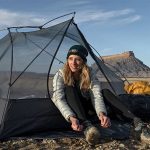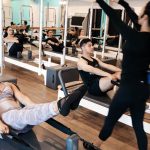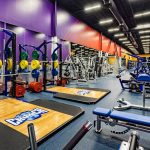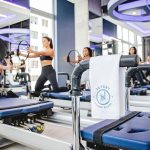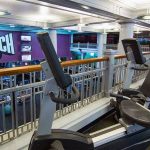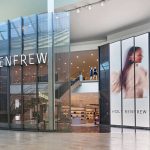At the Deckers annual investor meeting held this month in Goleta, CA,
the executive team and representatives from each of the companys
brands UGG, Simple and Teva gave an overview of the progress made
in the past few years as well as future growth initiatives. Wall Street
was apparently impressed with the news coming out of the conference,
since DECK shares jumped over 25% following the presentations.
Part of the reason for traders to get excited was the fact that DECK
issued new long-term guidance. The company feels that it can hit $750
million in sales between 2010 and 2012. That consists of $500 million
on the UGG brand, $175 million with Teva and $75 million for
Simple. Management also said that if it hits these revenue
targets, operating margins should expand as the business scales.
Deckers CEO Angel Martinez said that the company is ready to take
advantage of any new acquisition opportunities, should they arise.
Martinez said that the type of acquisition he is looking for would be a
brand that is currently starved for resources, has the potential to
become a lifestyle brand, and most importantly, it must already have a
dedicated management team in place.
“It has that core product that I feel has been underleveraged or we can
evolve it in such a way that we can create a lifestyle statement,”
Martinez explained. “My preference is to take a brand from a $20
million level to $100 million. That's more fun to me than taking a $100
million brand to $150 million, because that is really the great
opportunity, to craft the brand for the long term. Sometimes when you
get a brand that is at $100 million already, they're doing great
revenue, they have great distribution, but the brand is formed in the
consumers' mind and if you want to change it a little bit, it's awfully
tough to do.”
For UGG, management sees the biggest opportunity domestically coming
from the Northeast and the Midwest. The brand will also see growth in
it owned retail operations, where management feels it can make a more
complete brand presentation. UGG is currently stronger in it womens
offerings than its mens and the owned retail gives the brand the
opportunity to show the breadth of its mens products.
Owned-retail is also a key element to UGGs growth internationally,
because there isnt “a retailer like Nordstrom” to present UGG in a
premium fashion.
Simple is continuing with its sustainable footwear initiative while
still keeping the footwear at an attainable price point. Their first
foray into this realm was with the Green Toe collection, which were
initially just four models. As Green Toe grew, Simple started rolling
out these environmentally friendly technologies in the rest of their
line. The end goal for Simple is to bring the idea of sustainability to
the mainstream with design, colors, price and materials.
Last year the brand made the commitment to making 100% sustainable
products. After making that commitment, Simple had the best
sell-through that the brand has ever had this fall. The latest line of
sustainable footwear, ecoSneaks, was Simples best selling line for men
and women.
Other than sustainable product, the brand is looking at several
initiatives on the operations side. First, Simple re-vamped its sales
organization to ensure that Simple has the right coverage in the
marketplace. Second, the company continues to expand its distribution
to get exposure in the marketplace.
Finally, the company is looking at creating a better international
business by getting the right distributors across the world. The early
progress is impressive. Simple inked a deal with some key accounts in
the UK and in the first three weeks, they had 100% sell-through on
ecoSNEAKS.
Angel Martinez described Simples future potential, “at some point,
Simple is going to turn a pretty significant corner, in my opinion, and
we want to make sure that we remain in the lead in the sustainability
and this whole effort.”
Tevas management said that they have been on a mission to make Teva
the brand of choice for the new outdoor athlete. There was an
independent study done in spring of 2006 that told the company that 76%
of 13- to 24-year-olds had never heard of the brand. Pete Worley, Teva
brand president described this as “kind of staggering.” To gain more
relevance with this key demographic and revive the Teva brand, the
company started on three initiatives. First, they made moves to gain
more authenticity in their core watersports market. Second, they looked
to broaden their product offering beyond just watersports sandals.
Third, Teva management took their product assortment even further into
closed toe fall footwear to even out the seasonality of the brand.
Regarding the last initiative, management said that they will slowly
balance their spring fall mix and that getting to a 50/50 balance point
is in the five-year plan for the brand. The brand is roughly 70/30
spring/fall right now, and Worley said that a “realistic goal” is to
get to 60/40. The goal is to become strong again in spring and let that
momentum carry over to fall.
Looking beyond Deckers long-term guidance, Martinez said that each
brand has the potential to grow even more. UGG has an opportunity
beyond $500 million, but management does not want to push it past a
point where it runs out of quality distribution and put the brand in
places it doesn't belong. Tevas potential was compared to some of the
more athletic brands, but management will keep it focused on the
outdoor industry.
Simple was called out as the biggest opportunity. “In the long term,
this could be the biggest brand of the bunch in terms of revenue,”
Martinez said. “Here you have a brand that — it appeals to everyone.
It has price points that are moderate across the board. It is not
seasonal; it's year-round. And it has that kind of products that, geez,
if we get a couple of good breaks and the ecoSNEAKS really take off,
Monica [DeVreese, Brand Manager for Simple] will be hosting this
meeting with her own Simple building somewhere.”










